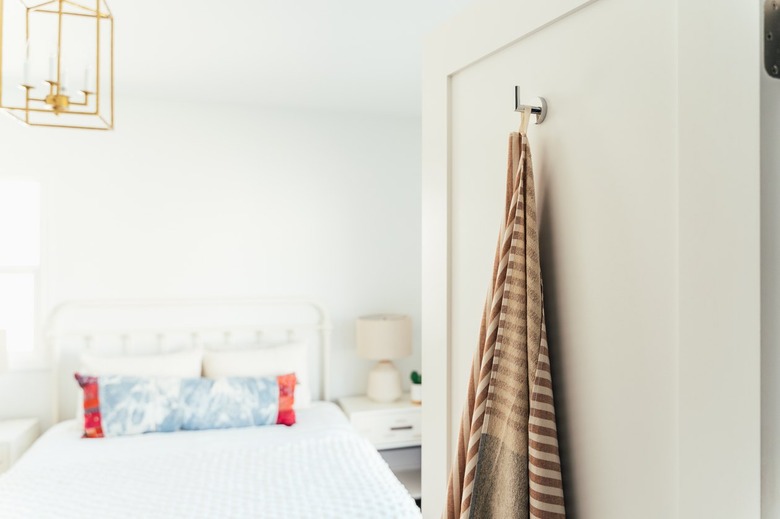How To Kill Moths In Your House
We may receive a commission on purchases made from links.
When you spot an unwanted pest in your home, you want to get rid of it fast! Household moths might seem like less of a problem than other critters, but their larvae can cause real issues for homeowners. Depending on the type of moth that's taken up residence in your domicile, you may find sweaters covered with holes and pantries where no snack is safe from their nesting and noshing.
Luckily, getting rid of moths in your home can be accomplished quickly and safely. But before you start throwing mothballs around, let's cover the basics of moth home infestation, including the different types of moths, the dangers they present homeowners, and yes, the best way to kill moths and keep them from coming back.
Different Types of Moths
Different Types of Moths
There are three types of moths commonly found in household infestations. They're the brown house moth, the pantry moth, and the clothes or carpet moth. As you can tell from most of their names, these moths are all attracted to different things. Pantry moths are the small flying fellows responsible for raiding your grains and pasta and leaving their larvae behind, while clothes moths pick fabrics as their larval feeding grounds. Finally, the brown house moth is a double hitter, laying eggs in fabrics and foods like barley or potatoes.
Are Moths Harmful?
Are Moths Harmful?
Can moths harm you? Only if you're a fine cashmere sweater. While you might not be happy to see moths flying around your home, it's the larvae you need to worry about. The larvae will chew through your clothing or carpets, or in the case of pantry moths, through your supply of dry goods. This process can also leave stains on fabrics and the remnants of hatching, like cocoon leavings, that need to be cleaned up.
Are Mothballs Safe?
Are Mothballs Safe?
Mothballs have long been used to help kill moths and their larvae. While effective, they contain naphthalene or paradichlorobenzene, substances poisonous to humans as well as moths. Though mothballs are sold as solid spheres, they release gas over time as they break down, which can cause respiratory problems.
That's why it's so important to use mothballs, and other pesticides, specifically as directed. These items are regulated by the Environmental Protection Agency (EPA). If you don't see that a pesticide or moth spray is labeled as EPA-approved, look for one that is.
How to Kill Moths in Your Home
How to Kill Moths in Your Home
Thankfully, it's easy to get rid of moths you find at home without resorting to the use of poison.
Moths in the Pantry
1. Vinegar Wipedown
If moths are infesting your pantry, remove the contents and dispose of affected items. Then clean your entire pantry, walls to shelves and in between, with a white vinegar solution. Moths can't stand the stuff!
2. Cedar, Cedar, Cedar
Moths (and other bugs) are repelled by the smell of cedar. Try cedar oil sprays or hang cedar sachets in problem areas.
3. Herbal Sachets
And speaking of sachets, fill these small bags with a mixture of fragrant herbs (lavender and bay leaves are very effective) and hang them in problem areas.
4. Sticky Traps
Commerical sticky moth traps work by attracting the moths using pheromones. The moths come in contact with the surface, get stuck, and eventually die. This can also be used on moths in the closet, but in neither case will it keep moths from ever coming back.
Moths in the Closet
1. Vacuum and Dust
Make vacuuming your carpets and dusting all your surfaces a part of your regular household cleaning. It's hard for larvae to flourish when they're being regularly vacuumed up.
2. Wash Affected Clothing
When you've located the moth infestation, take all the affected clothing and wash and dry the items to remove any living larvae. For items that can't be washed, place them in sealed plastic bags inside the freezer for at least 24 hours to kill off any remaining larvae.
3. Know When to Call a Pro
While most household moth infestations are easy to handle solo, don't be afraid to contact an expert if other solutions aren't working out. A pro can give you more information about what other options may be available to you.
